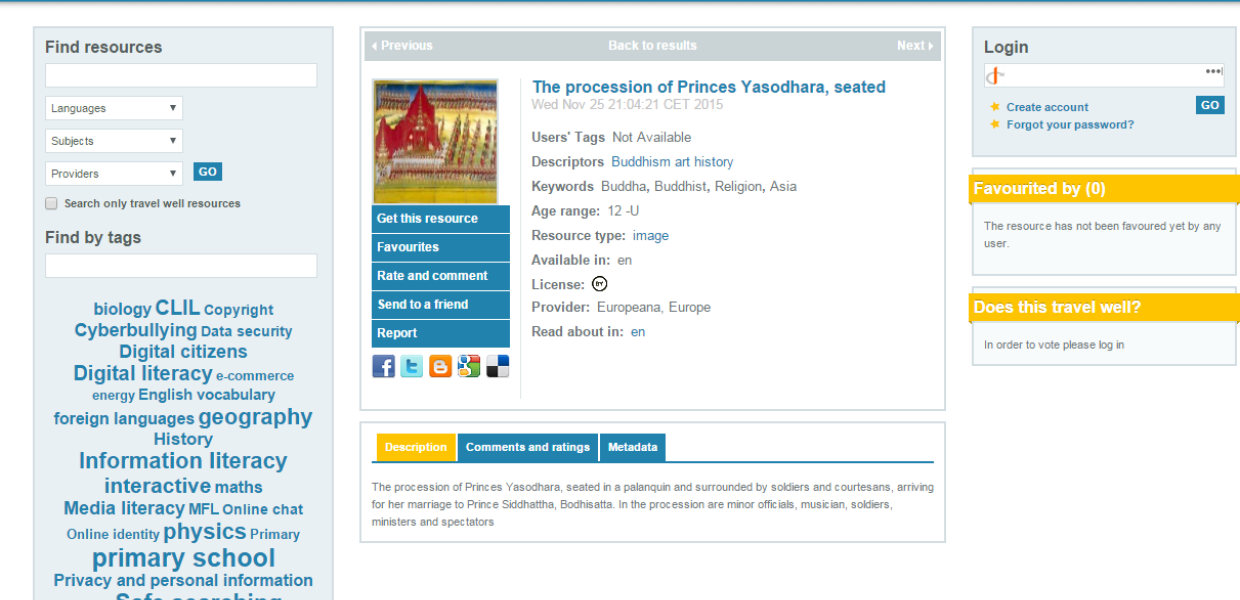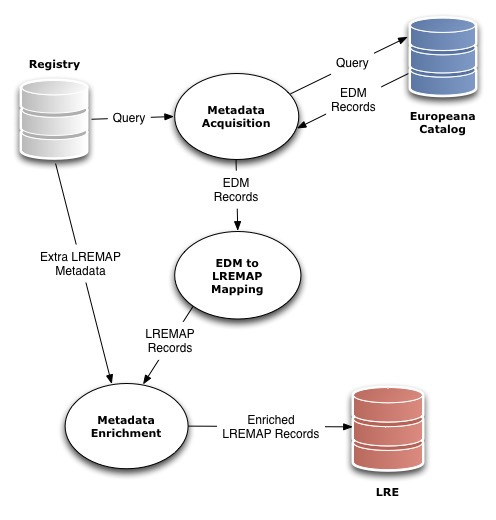Introducing Europeana to the Learning Resource Exchange

As part of its mission to encourage re-use of digital heritage in education, Europeana is working to bring its collections to the platforms used by Europe’s educators. The Learning Resource Exchange from European Schoolnet (EUN) is one such platform, allowing teachers to access educational content from numerous countries and providers. Here, David Massart from European Schoolnet tells us how Europeana’s collections have been made a part of this trusted service for teachers.
The Learning Resource Exchange (LRE) brings together high quality Open Educational Resources (OERs) from a range of providers and countries. At the moment, though open to any educational partners, the LRE is mainly used by European Ministries of Education. It works in a similar way to Europeana: it aggregates the descriptions (or metadata) of OERs, and compiles these into a searchable catalogue. E-learning platforms (e.g. virtual learning environments or educational portals) can then access this information via LRE’s API.
Given its specific audience, the LRE catalogue does not aim to refer to all the OERs available in Europe and beyond, but rather to the resources that ‘travel well’ across national, cultural and linguistic boundaries so that they can usefully complement the national resources already offered by Ministries of Education.
As part of Europeana DSI, EUN worked on putting in place ways to add relevant Europeana resources to the LRE catalogue.

An example of a Europeana collection item in the LRE
Adding Europeana to The Learning Resource Exchange
Adding Europeana’s resources to the LRE catalog took several steps:
- Identifying relevant resources: Europeana contains millions of digital resources, but which are educators teaching at the K-12 levels in Europe most interested in? Our first task was to identify relevant subsets for these teachers in Europeana’s collections. On top of K-12 relevance, they needed to offer educational value and have the potential to ‘travel well’, as mentioned above.
- Metadata acquisition: Once we identified the relevant resources, we prepared the queries needed to obtain the metadata records describing them by calling the Europeana API.
- Metadata mapping and vocabulary crosswalks: In LRE’s catalogue, OERs are described according to the LRE Metadata Application Profile (LREMAP), which is very different to the Europeana Data Model and the controlled vocabularies it uses. To import the records into the LRE, we mapped them from EDM to LREMAP.
- Metadata Enrichment: Next, we wanted to enrich them to increase their retrieval and re-use. We focused on doing this for the resources considered to be particularly interesting from a teaching and ‘travel well’ perspective, enriching these with educational metadata.
- Automation: Last of all, we automated this process so it can be repeated on a regular basis (i.e. at least weekly). This ensures relevant new resources added to Europeana are automatically included in the LRE.
Below, you can see the logic to our approach:

Implementing and automating all of this workflow was greatly simplified by using Tuktu, an open source big data analytics platform that focuses on ease of use. Through this work, the ability to query Europeana is now part of the official Tuktu distribution.
What kinds of things can teachers now find?
With the help of Europeana DSI, the LRE now provides a curated selection of Europeana’s resources adapted to teaching and learning. These resources are well suited to a variety of school subjects. Biology teachers, for instance, can help students get inside the mind of Darwin through his fascinating drawings while teachers introducing students to world religions can explore these via a 3D rendering of an early Christian church or vivid illustrations of the life of Buddha. Or if they’re planning a lesson on Europe’s colonial empires, why not use this original Dutch map of Africa?
There are about 500 curated resources at the moment, with more being added each month. Explore the entire collection.
